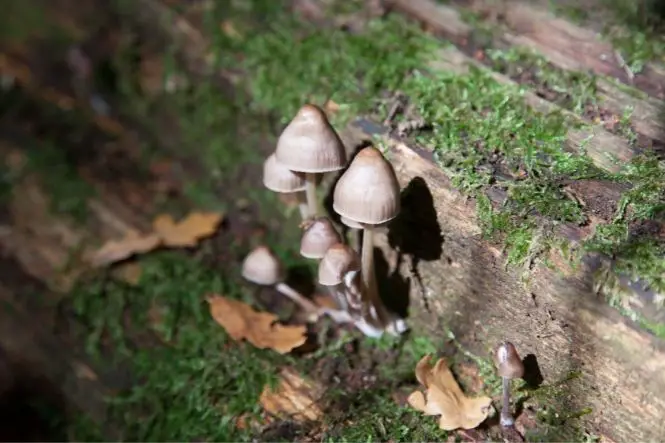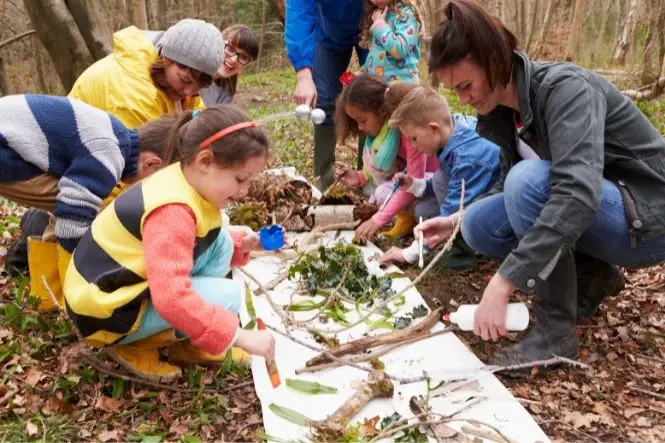Fungi (singular is ‘fungus’) are not plants or animals but are in a separate kingdom.
Fungi Facts
Mushrooms are the fruit of some kinds of fungi – the rest of the fungus is made up of a mycelium, or web, of fine threads (hyphae) in the soil, tree or dead leaves.
The mycelium (a web of hyphae) of a single fungus can be huge – a honey fungus found in America, which infects trees, was thought to be between 2,400 and 8,500 years old, and covered about 10 square kilometres of the forest.
The top of a mushroom is called the cap – inside are gills, where it produces spores, instead of seeds.
Make a spore print – take an open, flat mushroom cap and leave it, gills down, on a piece of white paper overnight, protected with a cup or glass. Lift the cap up carefully – there should be a pattern of spores on the paper.
Some mushrooms can release 2.7 billion spores a day.
A giant puffball contains around 7 trillion spores – it can be up to 150 cm in diameter, though is more likely to 10 to 70 cm.
Some mushrooms just drop their spores and let the wind carry them away, but some shoot their spores in the air, as far as 2.5 metres.
Some mushrooms, like the stinkhorns, smell of rotting meat – this attracts flies, which then carry the spores away.
Fungi that live on trees can damage and kill the tree (parasitic) or just live in the tree and help it grow (symbiotic).
Fungi can cause disease – athlete’s foot is a fungus that grows between people’s toes and is very itchy, and may affect up to 20% of people.
A truffle is the fruit of a fungus that grows in tree roots, and many people prize it for its flavour – truffles are very precious and in December 2007, a truffle sold for $330,000.
Truffle hunters use pigs or dogs to find truffles.
Some fungi live under water.
Lichens are a partnership between algae and fungi, and can be hundreds of years old.
Some wild mushrooms are poisonous, and these ones are sometimes called toadstools – one called the Death Cap may cause about 90% of deaths from mushroom or toadstool poisoning (when picking wild mushrooms to eat, talk to an expert to be very sure that they are the right ones)
Some ants grow fungi for food in underground gardens.
Moulds on food are fungi.
What are Fungi Used For?
People all around the world eat mushrooms.
Yeast is a single-celled fungus, and is used to make bread rise, and to produce alcohol by fermentation in beer, wine and cider (see ‘Make Yoghurt and Grow Yeast’).
Penicillin, an antibiotic (a drug that kills bacteria) is made from a fungus.
Fungi helps organic materials (things from plants) break down in the compost bin.
Organic gardeners and farmers use fungi to kill pests.
Lichens used to be used to dye fabric and wool.
The blue veins in Stilton cheese and other blue cheeses, and the white rind on Brie and Camembert are fungi (and it makes them taste very good).





